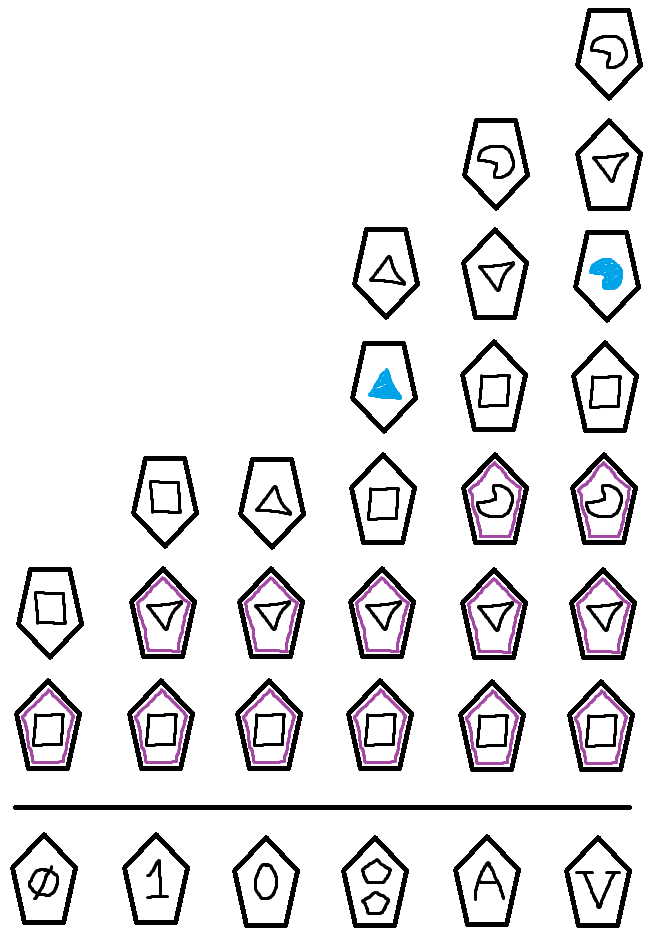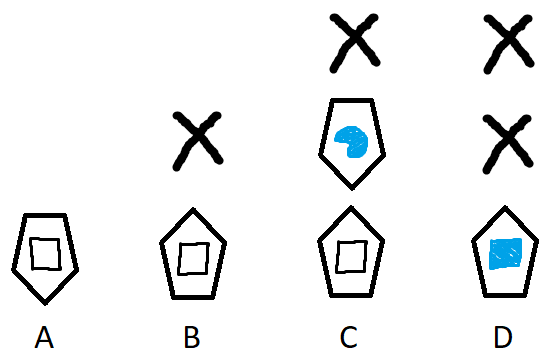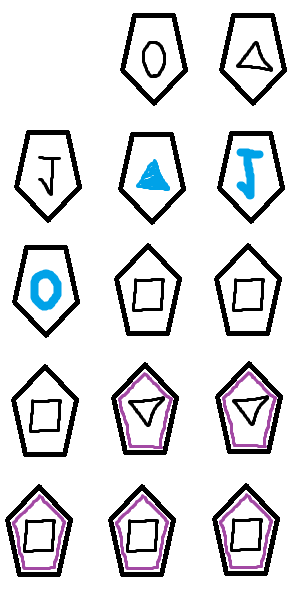Levanota Gadgets
This Old Vacillian puzzle was practiced in the continent's early years. It must have been wildly popular since it spawned its own deity who guards and remembers all existing knowledge about the game. But historians aren't sure what makes these gadgets so special, and while the puzzle doesn't have many rules, the purpose and appeal of the game are inscrutable. Even if they'll never be commonly practiced again, the Levanota Gadgets remain a fascinating mystery for some scholars and hobbyists.
History
It was originally believed to be an ancient game, due to its easy setup and the use of primitive clay-kilning for game pieces. This is the game's first mystery: it's surprisingly recent in its invention, and the minimal rules appear to be part of its charm, though the puzzle is anything but simple.
Piece Ranges
Although this isn't an official rule, some analysts talk about the "range" of a piece. The range of an upward ("nota") piece is the complete stack above it; downward ("leva") pieces have no range.
Note that back-leva and back-nota pieces both reference stacks outside their own range. This is why back pieces cannot be used at the bottom of a stack. They must always be internal to another stack.
Game Pieces
Every piece looks the same: a flat stone or clay token with one line of symmetry and a symbol on the front and back. The most common pieces are slightly irregular pentagons, though others resembled spearheads or fishhooks. They're placed in vertical lines, called "stacks" by modern players, with each piece facing downward ("leva") or upward ("nota"), on either its front or its back side. This means there are four ways to orient a piece: front-leva, back-leva, front-nota, and back-nota. Some Old Vacillian writers use these phrases as idioms for South, West, North, and East. Each piece has a symbol inscribed or painted on both sides. The back side is drawn with a lighter color and a heavier instrument; in our diagrams, a back piece is represented by a wide blue symbol. Furthermore, sometimes a piece is "doubled" to represent special importance, indicated by setting two game pieces on top of each other; in our diagrams, this is represented by a purple outline on the piece. The figure to the right describes six different stacks which historians find commonly in Old Vacillian artwork and texts. The pieces on the bottom row are the corresponding "shorthands;" sometimes an entire stack is represented by a single piece with a particular symbol. Other symbols (the square, inverted triangle, and 3/4-circle), are apparently generic and have no inherent meaning.Complete Stacks
Pieces cannot be stacked in any order; in fact, it seems like very few positions are legal. Some pieces indicate the existence of other pieces, and every such piece must be satisfied for the stack to be "complete." To check for a complete stack, it should be read from the bottom to the top, resolving each piece by confirming that it's part of a complete stack. The rules for each piece are as follows.- If a piece is on its front side and facing downward ("front-leva"), it can be immediately resolved. A single front-leva piece comprises a complete stack (see A in the figure).
- If a piece is on its front side and facing upward ("front-nota"), it's attached to the stack above it. The stack is only complete if the front-nota piece is directly followed by a complete stack (see B in the figure).
- If a piece is on its back side and facing downward ("back-leva"), it indicates that the stack below it is indirectly attached to the stack above it. Just like the front-nota piece, the back-leva must be directly followed by a complete stack (see C in the figure).
- If a piece is on its back side and facing upward ("back-nota"), it's attached directly to the next stack, and indirectly to the stack after that. The stack is only complete if it's directly followed by two stacks in sequence (see D in the figure).
Piece Ranges
Although this isn't an official rule, some analysts talk about the "range" of a piece. The range of an upward ("nota") piece is the complete stack above it; downward ("leva") pieces have no range.
Note that back-leva and back-nota pieces both reference stacks outside their own range. This is why back pieces cannot be used at the bottom of a stack. They must always be internal to another stack.
Collapsing a Stack
Part of the game (the strategy? the objective?) is to simplify a stack by removing certain pieces. The semantics are as follows:
- To "remove" a piece, take it out of the stack and shift the pieces above it to fill its location.
- To "replace" a piece with another piece, place the new piece in the old one's position. The new piece should be flipped the same way (front/back) as the old piece.
- To "replace" a piece with a stack, place the stack in the piece's position, shifting other pieces upward as needed. The bottom of the stack should be flipped the same way (front/back) as the old piece.
There seem to be only two rules for changing the elements of a stack.
First Rule
A doubled back-facing piece, usually called a "lord," can always be collapsed. Note that every lord is a back-nota piece, which means it has to be followed by two stacks. Then we may define the following rule.
Suppose a complete stack is enclosed by a lord (call it P) and a second stack (call it Q). If any piece in this stack has the same symbol as P, you may replace it with the stack Q. If no such piece exists, you may remove P and Q (simultaneously) from the stack.
For example, consider the figure at right, where the X indicates a complete stack. For every piece in X with a square symbol, we will replace that symbol with the 3/4-circle to match the piece on top. Then the pieces at the bottom and the top will be removed.
A "doubled back-facing piece" like the one at the bottom is sometimes called a "goal piece," since the number of goal pieces is slowly reduced to 0 as the game is played. Supposedly, part of the game is to build a stack containing one or more goal pieces, and then to eliminate each one using the game's rules. Is this done by one or more players? Who designs the stack? Is there luck or betting involved? No documents have been found which answer these questions for good.
Second Rule
If a piece is being used as shorthand for a stack, you may replace it with that stack.
Shorthand symbols often crop up in famous Levanota gadgets, like the three stacks shown below.
Third Rule (Maybe)
Some modern players have implemented an optional third rule for reducing a stack. Whenever a doubled piece is immediately resolved by a congruent leva piece (as shown on the right), it can be simplified by removing the piece on top and undoubling the piece on the bottom. The remainder, a single nota piece, is functionally equivalent.
A Fatal Flaw?
The stack shown at right caused some commotion in 630, since it suggests that the rules of the game are incomplete or inconsistent. Note that the second piece from the bottom is a "doubled back-nota," which means it can be collapsed using the above rules. But when we try to simplify the stack, the result is identical to the stack we had before. No matter how many times we simplify, we don't get any closer to (presumably) the end of the game. Did the Old Vacillians have a special rule for these situations? Is our interpretation of the rules misguided? Or is the game fundamentally broken? This question is still unresolved.
The discovery of this apparent glitch was demotivating, and research of the Levanota Gadgets has slowed down in the past century. This could change if anyone discovers more Old Vacillian work on the subject: some of their gadgets are nearly 100 pieces long, and its clear they've made plenty of discoveries which have yet to be unpacked.
Remove these ads. Join the Worldbuilders Guild









Comments